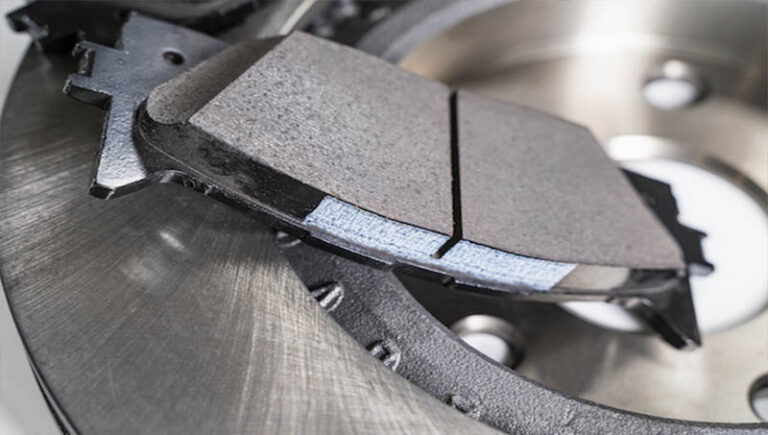Brake pads are an integral component of a vehicle’s braking system, crucial for ensuring safety on the road. They play a pivotal role in slowing or stopping your vehicle when needed. However, over time, brake pads wear down, and uneven wear patterns can significantly impact their efficiency and the overall braking performance of your vehicle.

What is Uneven Brake Pad Wear?
Uneven brake pad wear refers to the non-uniform erosion of the brake pad material. Instead of wearing evenly across the surface, certain areas experience more friction and degradation than others. This can manifest in various patterns, such as taper wear, edge wear, or uneven patches, leading to compromised braking efficiency.
Common Causes of Uneven Brake Pad Wear
Heat-related issues:
Heat plays a significant role in brake pad wear. Overheating within the brake system due to prolonged braking, aggressive driving, or towing heavy loads can cause uneven pad wear. Additionally, improper brake fluid levels or degraded fluid quality can lead to overheating, affecting pad performance.
Mechanical factors:
Misaligned brake calipers or uneven pressure distribution can cause certain areas of the brake pads to endure more friction than others. This can result from poor installation, worn-out hardware, or issues within the braking system itself.
Environmental factors:
External factors like corrosion and rust can impact brake pad wear. Driving in harsh conditions, such as frequent stop-and-go traffic or environments with high humidity and road salt, can accelerate wear and tear.
Material quality and manufacturing defects:
Sometimes, uneven wear can stem from inferior quality brake pad materials or manufacturing defects, leading to premature degradation.
Signs and Symptoms of Uneven Brake Pad Wear
Identifying uneven brake pad wear is crucial for timely maintenance. Signs include visual cues like uneven thickness, grooves, or rough patches on the pad surface. Audible warnings, such as squealing or grinding noises during braking, and changes in braking behavior like pulling to one side or longer stopping distances, also indicate uneven wear.
Impact on Vehicle Performance and Safety
Uneven brake pad wear directly affects braking efficiency, potentially compromising your vehicle’s ability to stop quickly and safely. It can also lead to damage to other braking components and pose safety risks for both the driver and passengers.
Diagnostic Methods for Identifying Uneven Brake Pad Wear
Routine visual inspections and the use of diagnostic tools by trained professionals are essential for accurately identifying uneven brake pad wear. Regular maintenance checks can catch issues early, preventing further damage and ensuring optimal performance.
Preventive Measures and Solutions
Regular maintenance is key to preventing uneven brake pad wear. This includes ensuring proper brake system lubrication, maintaining correct fluid levels, and addressing any mechanical issues promptly. Additionally, replacing brake pads at recommended intervals and using quality components can prolong their lifespan.
Seeking professional assistance from certified mechanics is crucial when dealing with brake-related issues. They have the expertise to diagnose and rectify problems effectively, ensuring your vehicle’s braking system operates at its best.
Conclusion
Uneven brake pad wear is a common issue that can significantly impact vehicle safety and performance. Understanding its causes, identifying warning signs, and taking proactive measures are essential for maintaining a reliable braking system. Regular inspections and timely maintenance, coupled with professional assistance when needed, are crucial steps toward ensuring a safe driving experience for you and your passengers.
This article aims to provide a comprehensive understanding of uneven brake pad wear, its causes, effects, and the importance of proactive maintenance in ensuring vehicle safety





